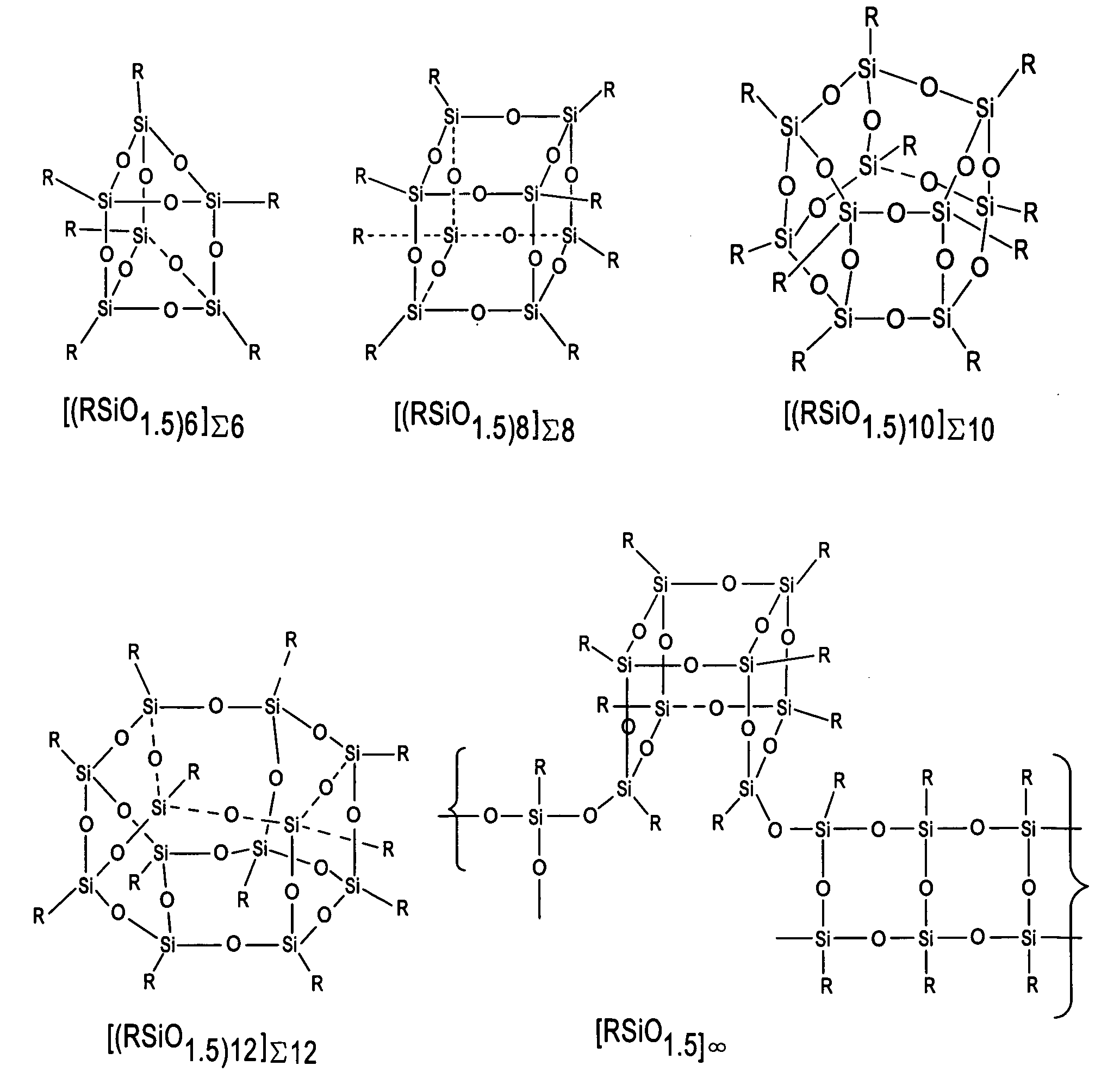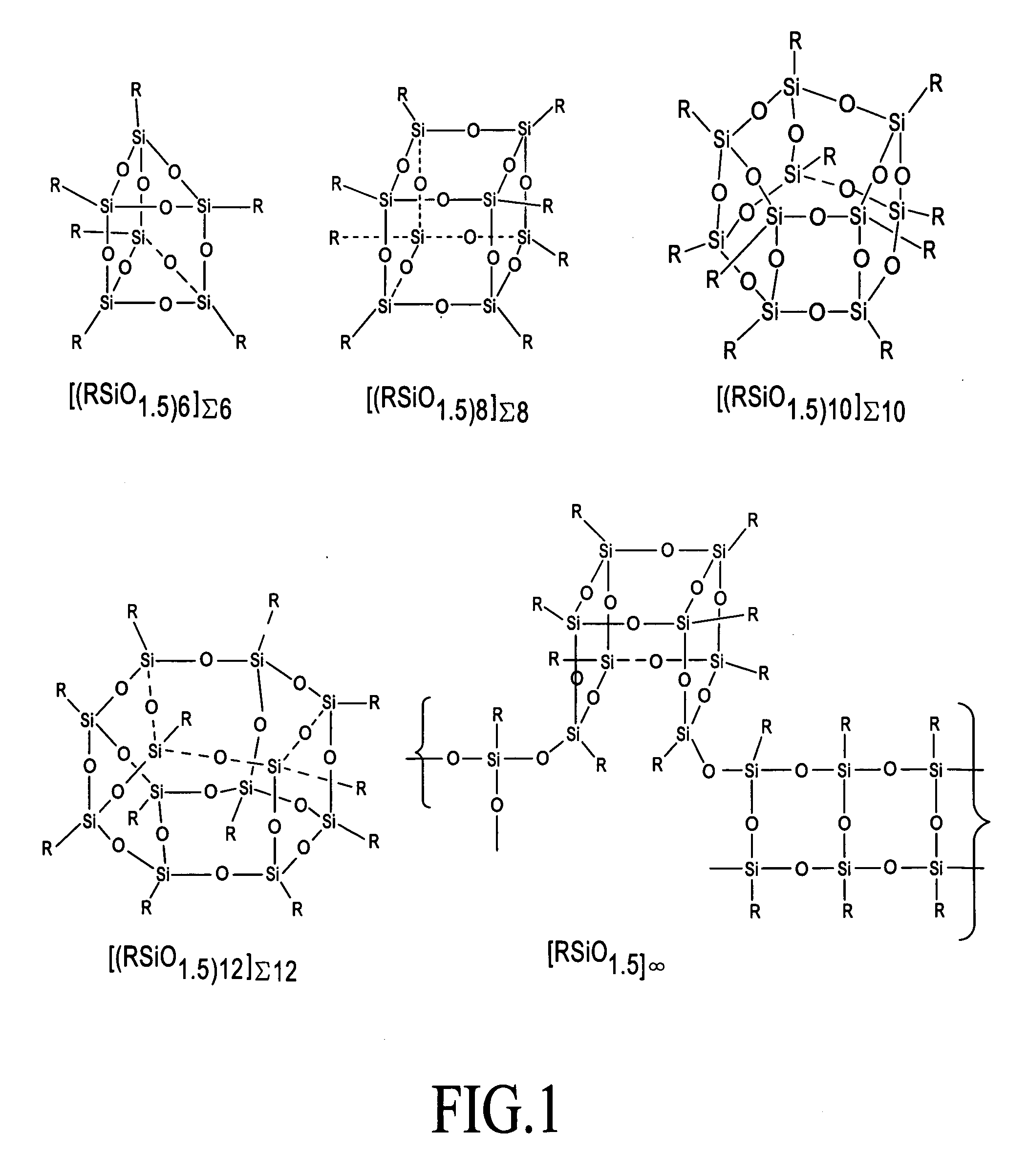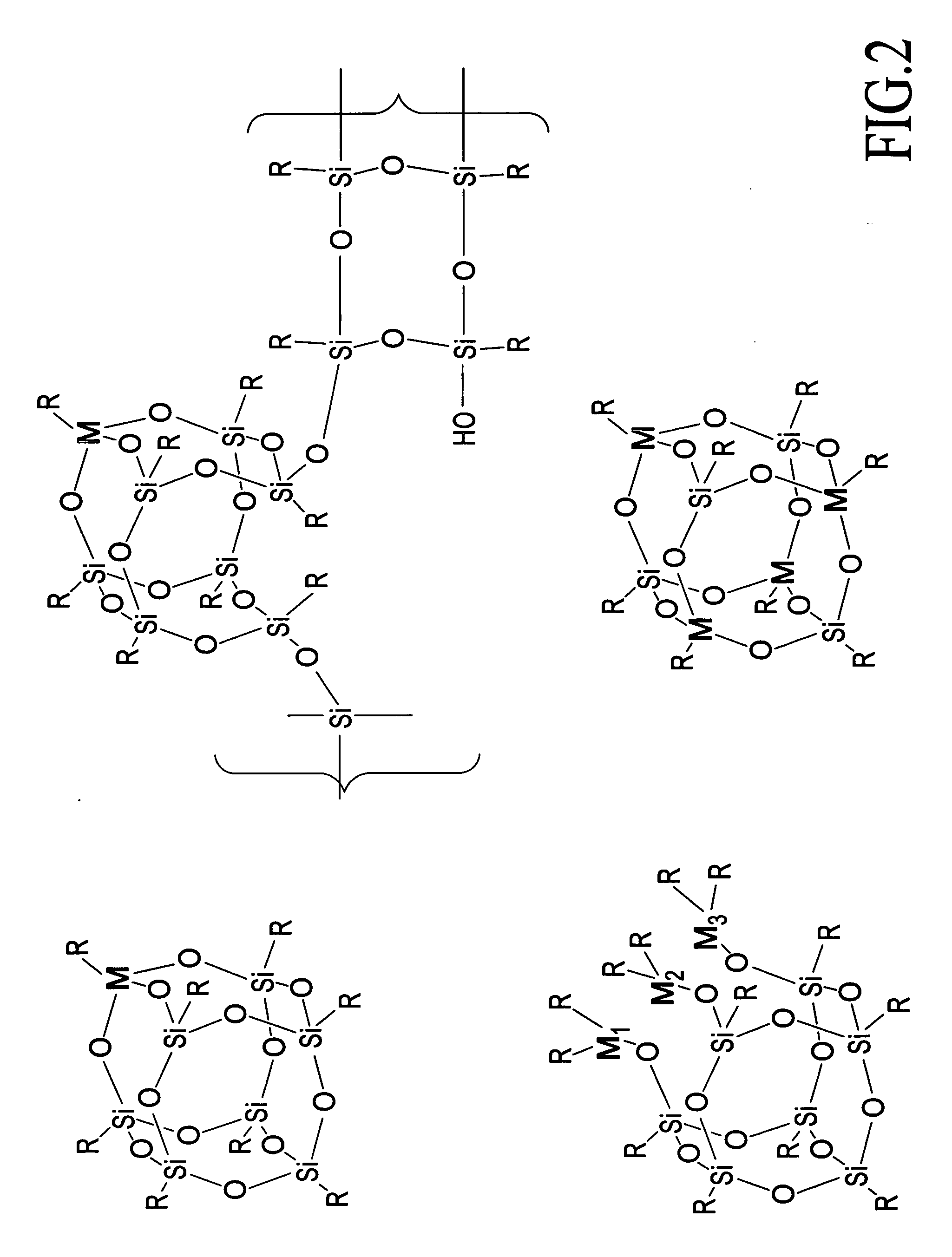Polyhedral oligomeric silsesquioxanes and metallized polyhedral oligomeric silsesquioxanes as coatings, composites and additives
- Summary
- Abstract
- Description
- Claims
- Application Information
AI Technical Summary
Benefits of technology
Problems solved by technology
Method used
Image
Examples
example 1
Moisture and Gas Barrier
[0052] A Silicon Containing Agent was incorporated into the polymer by melt compounding using a twin screw mixer and was processed into film followed by permeation measurements made on Mocon® equipment for nonglassified (FIG. 4a) and glassified (FIG. 4b) (oxidized) films.
[0053] Typical oxygen plasma treatments range from 1 seconds to 5 minutes under 100% power. Typical ozonolysis treatments range from 1 second to 5 minutes with ozone being administered through a CH2Cl2 solution with 0.03 equivalents O3 per vinyl group. Typical steam treatments range from 1 second to 5 minutes. Typical oxidizing flame treatments range from 1 second to 5 minutes. Similar oxidation may be obtained through laser marking techniques via use of a laser operating in an oxidizing medium.
% POSSOxidation*P W / O*P W*Perm postPolymerPOSSLoadingMethodPOSSPOSSoxidationPMMAMA07025Plasma 0.1 (O2)0.07 (O2)0.03 (O2)Nylon 6MS08251Plasma 180 (O2) 97 (O2) 130 (H2O)1.56 (H2ONylon 6MS08301Plasm...
example 2
[0055] Optically clear samples containing various loading levels of Gd POSS were formulated into the FireQuench® 1287 resin system. A foil of Au was sandwiched between the Gd POSS® FireQuench® alloy. The samples were then exposed to a nuclear reactor that provides a watt fission neutron spectrum (energy range: 1-20 MeV, Ave.: ˜1 MeV). Only thermal (0.0253 ev) and epithermal (>0.5 eV) neutron flux were measured. The total neutron flux was measured using high purity gold foil. The reaction involved is Au-197(n,£Λ) Au-198. A cadmium cover was used to determine the thermal component of the total neutron flux. The absolute flux was determined from the measured induced activity in the gold foils. Gamma spectroscopy is performed on an energy and efficiency calibrated high purity germanium detector (HPGe). The measured neutron flux distribution at 950 kW is 3.57E+07 n / cm2-sec thermal and 1.27E+07 n / cm2-sec epithermal. The calculated error in flux measurement is 0.7...
example 3
UV, VUV, Visible Radiation Barriers and Emissive Additives
[0056] Samples of various metallized POSS were exposed to UV through visible radiation and their absorption characteristics are shown in FIG. 12. It is clear that the absorption characteristics can be tuned through adjustment of the metal contained in the system. For example, Ce and Ti based POSS are particularly good absorbers for a broader spectrum of UV radiation than a narrowly absorbing Al POSS. Further, it has been shown these systems can be incorporated into optically clear polymers and composites and subsequently converted into nanoscopically thin glass surface layers which may offer an additional advantage as radiation absorbing top coats. These coatings will find utility in a variety of polymers including silicones which are degraded at 150 nm and in polycarbonate which is degraded at 243 nm.
[0057] Additionally useful are the emissive characteristics of several metallized POSS systems. For example, Tb POSS is a st...
PUM
| Property | Measurement | Unit |
|---|---|---|
| Level | aaaaa | aaaaa |
| Emissivity | aaaaa | aaaaa |
| Refractive index | aaaaa | aaaaa |
Abstract
Description
Claims
Application Information
 Login to View More
Login to View More - R&D
- Intellectual Property
- Life Sciences
- Materials
- Tech Scout
- Unparalleled Data Quality
- Higher Quality Content
- 60% Fewer Hallucinations
Browse by: Latest US Patents, China's latest patents, Technical Efficacy Thesaurus, Application Domain, Technology Topic, Popular Technical Reports.
© 2025 PatSnap. All rights reserved.Legal|Privacy policy|Modern Slavery Act Transparency Statement|Sitemap|About US| Contact US: help@patsnap.com



